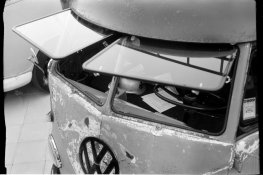Hi guys
I need to get a grey card in my life somehow - I'm not a novice, I just never got around to buying one and using it - because I want to move into LF and scanning more and it will be a nightmare trying to digitally print from negs without some kind of white balance control going on.
What's the best A. way to use a grey card for the purpose of shooting and scanning, then digitally outputting, and B. grey card to get?
I'm so ashamed not to have more knowledge on this, I've only ever understood the use of grey cards in theory and not ever actually put one to use in my work.
Will it change my life ?
Do I need one ?
I am presuming Yes!
cheers
I need to get a grey card in my life somehow - I'm not a novice, I just never got around to buying one and using it - because I want to move into LF and scanning more and it will be a nightmare trying to digitally print from negs without some kind of white balance control going on.
What's the best A. way to use a grey card for the purpose of shooting and scanning, then digitally outputting, and B. grey card to get?
I'm so ashamed not to have more knowledge on this, I've only ever understood the use of grey cards in theory and not ever actually put one to use in my work.
Will it change my life ?
Do I need one ?
I am presuming Yes!
cheers











